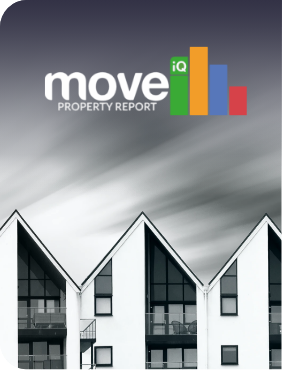
How Do Home Renovation Loans Work?
Looking to add value to your home? A little home renovation can go a long way.
Whatever renovation project you’re looking to take on, whether it’s re-doing the flooring or a loft conversion, a home improvement loan can help you pay for it.
How does it all work?
From the different types to pros and cons, here’s everything you need to know.
What is a home improvement loan?
There are many ways to finance home improvements, from your credit card to your savings. Taking out a loan is one of the most popular. It can be used to pay for the work you want to do upfront.
Essentially, a home renovation loan allows you to borrow a set amount which you pay back over a period of time.
What can it pay for?
You can use the money to renovate your home in a variety of ways, including:
- Painting (or other forms of decoration)
- A loft conversion – always check to see if you need to apply for planning permission
- An extension
- Flooring
- Updating fixtures and fittings
- Light landscaping
- Rewiring, replumbing etc.
- Energy saving home improvements
While less common, bear in mind that some lenders may want to approve the work beforehand. Working out how to pay for your project is a vital part of planning a major home renovation.
The benefits
Paying for your home renovation project in this way has its benefits, such as:
- Quick process – once approved, you’ll usually receive the money in a matter of days, enabling you to crack on with the work
- Flexibility – you can choose your loan term and how long you have to pay it back
- Freedom – most lenders will allow you to spend the money as you see fit
- Higher amounts – can often borrow more than on your credit card or by remortgaging your home
- Can find fixed rates (usually secured loans only)
The downsides
Of course, there are some inevitable downsides:
- Difficulty getting approved – e.g. if you’re self-employed
- Unsecured loans can have high interest rates
- Secured loans risk home repossession if you don’t keep up with your payments
- Extra costs – may have to pay arrangement fees or early repayment fees
Interest rates
When it comes to borrowing money, a number of factors will impact how much interest you’ll have to pay. This includes:
- The loan amount
- Monthly payments – how soon can you pay it back?
- Whether it’s secured or unsecured
- Your credit rating
For this reason, it’s essential you check your credit score beforehand to get an idea of where you stand. You can run a soft check that doesn’t impact your credit score to see how likely you might be to get the loan you want.
The different types of loan
With these loans, they’ll either be secured or unsecured.
What is a secured loan?
Also known as a home equity loan, a secured loan is one that you take out against your home; if you’re a homeowner or you have a mortgage. Essentially, you borrow against the equity in your home.
Pros
As the loan is secured by the money within your property, you can often find lower interest rates than with unsecured loans. They also tend to be fixed. You may also find lenders are willing to let you borrow higher amounts, as the risk to them is reduced.
Of course, this will depend on whether you have any existing debts and your credit history.
Cons
If you’re unable to pay back the loan, your lender can take it from the equity you’ve built up in your property. In some cases, houses have been repossessed if people couldn’t keep up with repayments.
Sometimes, you can be penalised if you try and pay back your loan early. So, even if you came into a larger sum of money, you might not be able to pay it off sooner without being charged.
What is an unsecured loan?
Unsecured personal loans allow you to borrow without putting an asset forward, such as your home. Whether you’re approved will depend entirely on your credit history and employment status, as there’s less security for the lender.
The interest you’re charged will often change month to month, rather than staying at a fixed rate. This can go in your favour, or against you.
Pros
You won’t risk losing your house by putting it up as collateral. If your credit rating is good, your employment stable and you’re confident you can pay it back – it’s likely an option worth considering.
Cons
As there’s a greater risk to the lender than with secured, you may find you’re able to borrow less and that interest rates are higher.
Plus, while you don’t have to put your house up as an asset, failure to make payments could seriously harm your credit rating. It could end up in a County Court Judgement (CCJ) being brought against you.
Secured vs. unsecured loans – which should you choose?
The answer to this depends entirely on your individual situation: there are a number of factors to weigh up, including:
- The scale of the project
- How much you’re looking to borrow
- Your credit history
- Your current circumstances
- Whether you’re willing to put your property up as an asset
- How long you want to pay it back (e.g. over a short or long term)
Whichever option you choose, you need to bear some things in mind, including your budget. Budgeting home improvements is essential, as many projects have gone wildly over budget and schedule in the past.
Not one for DIY? Ensure you find a tradesman you can trust, ideally a local one who has experience with similar properties.
Alternative options for borrowing money for renovations
Let’s compare a home improvement loan to some of the alternative options available to you.
Remortgaging your property
Remortgaging, or borrowing against your home, is another option many choose. You release some of the equity you’ve built up and borrow more. While this may mean you end up paying it back over a longer-term, you may find a better deal.
This process tends not to be as quick as a home improvement loan, because you’ll need a new property valuation. You’ll also need to know what project you’re going to take on and how much it will cost.
Savings
If you’ve saved up or inherited a large amount of money, you could use this to pay for the work. There’s no need to consider interest rates or loan terms, and the money is yours to do as you please.
If you don’t have a strict deadline to adhere to, you could start saving now and tackle the project later on down the line.
However, bear in mind this will probably only be an option for smaller projects, rather than major works. You’ll also need to consider if you really want to eat into your savings.
Credit cards
If it’s a smaller amount you’re looking to borrow, a credit card is another option over a homeowner loan. The advantage here is that you can find lower interest rates, sometimes 0%.
Some of the process is similar, for example, affordability checks will determine how much a lender is willing to let you borrow and the interest rates.
However, bear in mind this is probably only a viable option if you can pay it back quickly.
Further advance on your mortgage
If you haven’t borrowed the full amount (maximum Loan to Value) available to you, you can take out an additional loan on top of your mortgage. You’ll need to meet certain criteria and have another valuation on your home.
However, this can mean you end up with two different loans to pay off, at different rates and within separate time periods.
Why take on a home renovation project?
You don’t need to have bought a fixer upper to want to improve your property. More and more of us are choosing to improve the homes we currently own, rather than buying somewhere new.
Significantly adds value
Adding value to your home is one of the most important reasons for renovating it. Another bedroom, or a bigger kitchen, can add thousands to its market value. This is great news when you do eventually come to sell, as you may end up making money in the long run.
Want to find out how much value you could potentially add? Use our extension value calculator as a guide – it will estimate how much.
Saves on energy bills
More and more of us are following energy saving tips and making going ‘green’ a priority. Our homes play a significant role in our carbon footprint. Implementing energy saving home improvements, such as double glazing or insulation, can make a big difference – and help us save on utility bills.
Switching energy supplier can also help you save money each month, while finding a supplier backed by 100% renewable energy.
More space
Whether you’re looking to grow your family or simply just want a bigger property, creating more space is a common reason why people choose to renovate.
Fresh makeover
Is remote working your new normal? With many of us spending more time at home, the need to spruce up the same four walls has become apparent. Even a fresh lick of paint and some new flooring can go a long way to improve your mood.
Need a home improvement loan?
Whatever loan term or amount you’re looking for, we can help you get a quote from the right people to make your project happen.
Last Updated: January 10th, 2025








